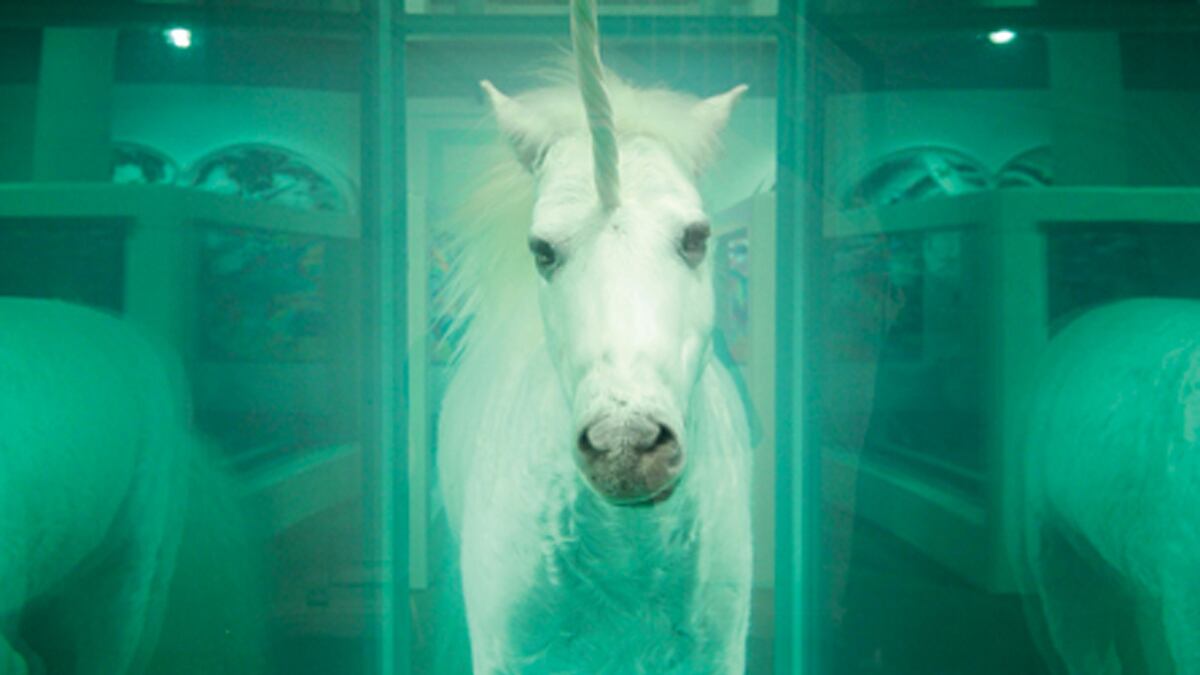Damien Hirst was the only artist who wouldn’t be interviewed for this project. That’s just as well. I couldn’t imagine asking the necessary questions: “How is it that your work has managed to encapsulate the essence of what it is for art to sell out? How did your whole career become a metaphor for how consumption has become our guiding force?” That is precisely what Hirst has achieved. Achieving it has made him a great artist.
Warhol once said, “Good business is the best art.” His studio was called the Factory, and it turned out art the way you’d make widgets. Hirst has surpassed him: He’s shown how the business of art, with its bubbles, may be the best business for today’s artists to explore.
Take Hirst’s diamond-studded platinum skull. Its bling matters less than the $100 million tag the artist decided to attach to it, more a symbol than a statement of price. When the skull did sell, it became clear that Hirst was part of the consortium that bought it, giving the piece a performance-art angle.
Yet the work doesn’t celebrate selling out. It’s a skull, and has the same grim edge as Hirst’s other art supplies: cut-up animals, dead flies and drugs. Hirst may be laughing all the way to the bank, but his art leaves the rest of us sobered.







